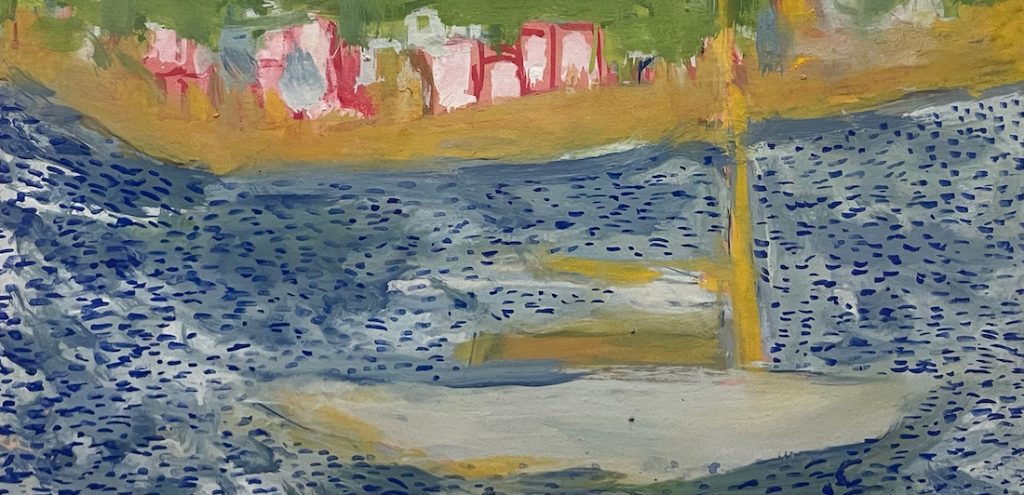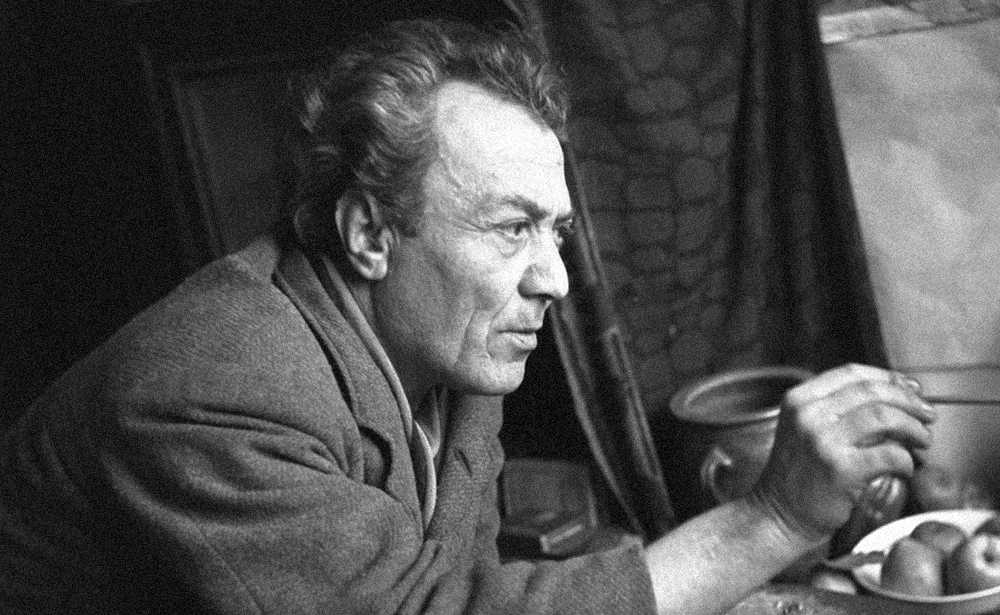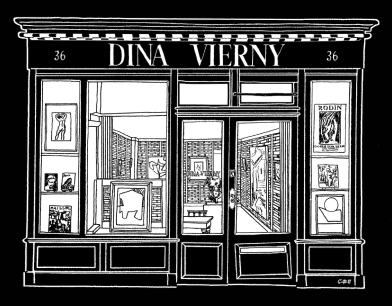All Exhibitions here


Fikret Moualla, or Fikret Saygi, was born in Istanbul in 1903. He was introduced to drawing and French culture at a very early age, thanks in particular to the French-speaking high school in which he studied. He then travelled through Europe to Switzerland, Germany and France to continue his studies, but a series of psychiatric accidents and hospitalizations – as well as his father’s refusal to continue subsidizing him – forced him to return to Turkey. There he was diagnosed as having normal mental health and was appointed as a…
Fikret Moualla, or Fikret Saygi, was born in Istanbul in 1903. He was introduced to drawing and French culture at a very early age, thanks in particular to the French-speaking high school in which he studied. He then travelled through Europe to Switzerland, Germany and France to continue his studies, but a series of psychiatric accidents and hospitalizations – as well as his father’s refusal to continue subsidizing him – forced him to return to Turkey. There he was diagnosed as having normal mental health and was appointed as a drawing teacher in a high school in Ayvalı, a post he soon left in order to fully practice his art. He was hospitalised again for a long time and Moualla preferred to leave Turkey for France in 1939.
In Paris, alcoholism added to the artist’s fragile mental health. Thanks to Dina Vierny, Fikret Moualla had his first Parisian exhibition in 1954 and met great French artists. He then regularly exhibited in Parisian galleries in addition to Dina Vierny’s, such as those of France Bertin, Marcel Bernheim, Bruno Bassano and Katia Granoff. Despite his unstable reputation and new hospitalizations, the collector Fernande Anglès supported him financially. From then on, the artist oriented his production towards more naive painting.
Youki Desnos, an artistic figure from Montparnasse, said of his painting: “Moualla establishes vast ‘patches’ of pure, continuous colour. These assertive surfaces are never flat. With their strident colours, they are never vulgar, for this colour, which is responsible for recreating a space, a light, is astonishingly accurate in tone, full of tremors and depth. These “coloured” areas support and set the “scenes” that Moualla’s drawing invents. This fast, confident, incisive drawing captures the characters in their gestures. Authoritative and tender, it expresses, with a perfect economy of means, what it has to express, without complacency, without dryness. On the contrary, wide and airy, it creates space, and quite naturally, where this drawing asserts itself, Moualla’s colour shades, divides, in a play of subtle values.
Fikret Moualla became paralysed in 1962 and ended his life in a clinic in Reillanne in May 1967.
Fikret MOUALLA – Collection USTUNEL, La Petite Galerie, Paris (March 23 – April 9)
Fikret Moualla, Centre Culturel Anatolie, Paris (October 1st – 31)
Fikret Mualla Retrospective, Istanbul Modern, Istanbul (April 15 – August 25)
Moualla, Galerie France Bertin, Paris (December 17 – January 5, 1960)
Istanbul-Montparnasse. Les Peintres Turcs de l’École de Paris, La Petite Galerie, Paris (March 16 – April 11)
Fikret Moualla et Stéphane Kilar Couleur et forme, Orangerie du Sénat, Paris (September 11 – 22)
Bir Ülke Değişirken – Tanzimattan Cumhuriyete Türk Resmi, Sakıp Sabancı Museum, Istanbul (December 24 – 31)
Une École de Paris turque dans la peinture turque: Fikret Moualla, Hakki Anli, Abidine Dino, Selim Turan, Avni Arbas, Nejad Devrim, Mübin Orhon, Remzi Rasa, Albert Bitran, Musée du Montparnasse, Paris (February 25 – April 4)
Petits et Grands Formats, Galerie André Roussard n°13 rue du Mont Cenis, Paris (December 10 – January 20, 1997)
Fikret Moualla, or Fikret Saygi, was born in Istanbul in 1903. He was introduced to drawing and French culture at a very early age, thanks in particular to the French-speaking high school in which he studied. He then travelled through Europe to Switzerland, Germany and France to continue his studies, but a series of psychiatric accidents and hospitalizations – as well as his father’s refusal to continue subsidizing him – forced him to return to Turkey. There he was diagnosed as having normal mental health and was appointed as a drawing teacher in a high school in Ayvalı, a post he soon left in order to fully practice his art. He was hospitalised again for a long time and Moualla preferred to leave Turkey for France in 1939.
In Paris, alcoholism added to the artist’s fragile mental health. Thanks to Dina Vierny, Fikret Moualla had his first Parisian exhibition in 1954 and met great French artists. He then regularly exhibited in Parisian galleries in addition to Dina Vierny’s, such as those of France Bertin, Marcel Bernheim, Bruno Bassano and Katia Granoff. Despite his unstable reputation and new hospitalizations, the collector Fernande Anglès supported him financially. From then on, the artist oriented his production towards more naive painting.
Youki Desnos, an artistic figure from Montparnasse, said of his painting: “Moualla establishes vast ‘patches’ of pure, continuous colour. These assertive surfaces are never flat. With their strident colours, they are never vulgar, for this colour, which is responsible for recreating a space, a light, is astonishingly accurate in tone, full of tremors and depth. These “coloured” areas support and set the “scenes” that Moualla’s drawing invents. This fast, confident, incisive drawing captures the characters in their gestures. Authoritative and tender, it expresses, with a perfect economy of means, what it has to express, without complacency, without dryness. On the contrary, wide and airy, it creates space, and quite naturally, where this drawing asserts itself, Moualla’s colour shades, divides, in a play of subtle values.
Fikret Moualla became paralysed in 1962 and ended his life in a clinic in Reillanne in May 1967.
Fikret MOUALLA – Collection USTUNEL, La Petite Galerie, Paris (March 23 – April 9)
Fikret Moualla, Centre Culturel Anatolie, Paris (October 1st – 31)
Fikret Mualla Retrospective, Istanbul Modern, Istanbul (April 15 – August 25)
Moualla, Galerie France Bertin, Paris (December 17 – January 5, 1960)
Istanbul-Montparnasse. Les Peintres Turcs de l’École de Paris, La Petite Galerie, Paris (March 16 – April 11)
Fikret Moualla et Stéphane Kilar Couleur et forme, Orangerie du Sénat, Paris (September 11 – 22)
Bir Ülke Değişirken – Tanzimattan Cumhuriyete Türk Resmi, Sakıp Sabancı Museum, Istanbul (December 24 – 31)
Une École de Paris turque dans la peinture turque: Fikret Moualla, Hakki Anli, Abidine Dino, Selim Turan, Avni Arbas, Nejad Devrim, Mübin Orhon, Remzi Rasa, Albert Bitran, Musée du Montparnasse, Paris (February 25 – April 4)
Petits et Grands Formats, Galerie André Roussard n°13 rue du Mont Cenis, Paris (December 10 – January 20, 1997)

Fikret Moualla, or Fikret Saygi, was born in Istanbul in 1903. He was introduced to drawing and French culture at a very early age, thanks in particular to the French-speaking high school in which he studied. He then travelled through Europe to Switzerland, Germany and France to continue his studies, but a series of psychiatric accidents and hospitalizations – as well as his father’s refusal to continue subsidizing him – forced him to return to Turkey. There he was diagnosed as having normal mental health and was appointed as a…
Fikret Moualla, or Fikret Saygi, was born in Istanbul in 1903. He was introduced to drawing and French culture at a very early age, thanks in particular to the French-speaking high school in which he studied. He then travelled through Europe to Switzerland, Germany and France to continue his studies, but a series of psychiatric accidents and hospitalizations – as well as his father’s refusal to continue subsidizing him – forced him to return to Turkey. There he was diagnosed as having normal mental health and was appointed as a drawing teacher in a high school in Ayvalı, a post he soon left in order to fully practice his art. He was hospitalised again for a long time and Moualla preferred to leave Turkey for France in 1939.
In Paris, alcoholism added to the artist’s fragile mental health. Thanks to Dina Vierny, Fikret Moualla had his first Parisian exhibition in 1954 and met great French artists. He then regularly exhibited in Parisian galleries in addition to Dina Vierny’s, such as those of France Bertin, Marcel Bernheim, Bruno Bassano and Katia Granoff. Despite his unstable reputation and new hospitalizations, the collector Fernande Anglès supported him financially. From then on, the artist oriented his production towards more naive painting.
Youki Desnos, an artistic figure from Montparnasse, said of his painting: “Moualla establishes vast ‘patches’ of pure, continuous colour. These assertive surfaces are never flat. With their strident colours, they are never vulgar, for this colour, which is responsible for recreating a space, a light, is astonishingly accurate in tone, full of tremors and depth. These “coloured” areas support and set the “scenes” that Moualla’s drawing invents. This fast, confident, incisive drawing captures the characters in their gestures. Authoritative and tender, it expresses, with a perfect economy of means, what it has to express, without complacency, without dryness. On the contrary, wide and airy, it creates space, and quite naturally, where this drawing asserts itself, Moualla’s colour shades, divides, in a play of subtle values.
Fikret Moualla became paralysed in 1962 and ended his life in a clinic in Reillanne in May 1967.
Fikret MOUALLA – Collection USTUNEL, La Petite Galerie, Paris (March 23 – April 9)
Fikret Moualla, Centre Culturel Anatolie, Paris (October 1st – 31)
Fikret Mualla Retrospective, Istanbul Modern, Istanbul (April 15 – August 25)
Moualla, Galerie France Bertin, Paris (December 17 – January 5, 1960)
Istanbul-Montparnasse. Les Peintres Turcs de l’École de Paris, La Petite Galerie, Paris (March 16 – April 11)
Fikret Moualla et Stéphane Kilar Couleur et forme, Orangerie du Sénat, Paris (September 11 – 22)
Bir Ülke Değişirken – Tanzimattan Cumhuriyete Türk Resmi, Sakıp Sabancı Museum, Istanbul (December 24 – 31)
Une École de Paris turque dans la peinture turque: Fikret Moualla, Hakki Anli, Abidine Dino, Selim Turan, Avni Arbas, Nejad Devrim, Mübin Orhon, Remzi Rasa, Albert Bitran, Musée du Montparnasse, Paris (February 25 – April 4)
Petits et Grands Formats, Galerie André Roussard n°13 rue du Mont Cenis, Paris (December 10 – January 20, 1997)
